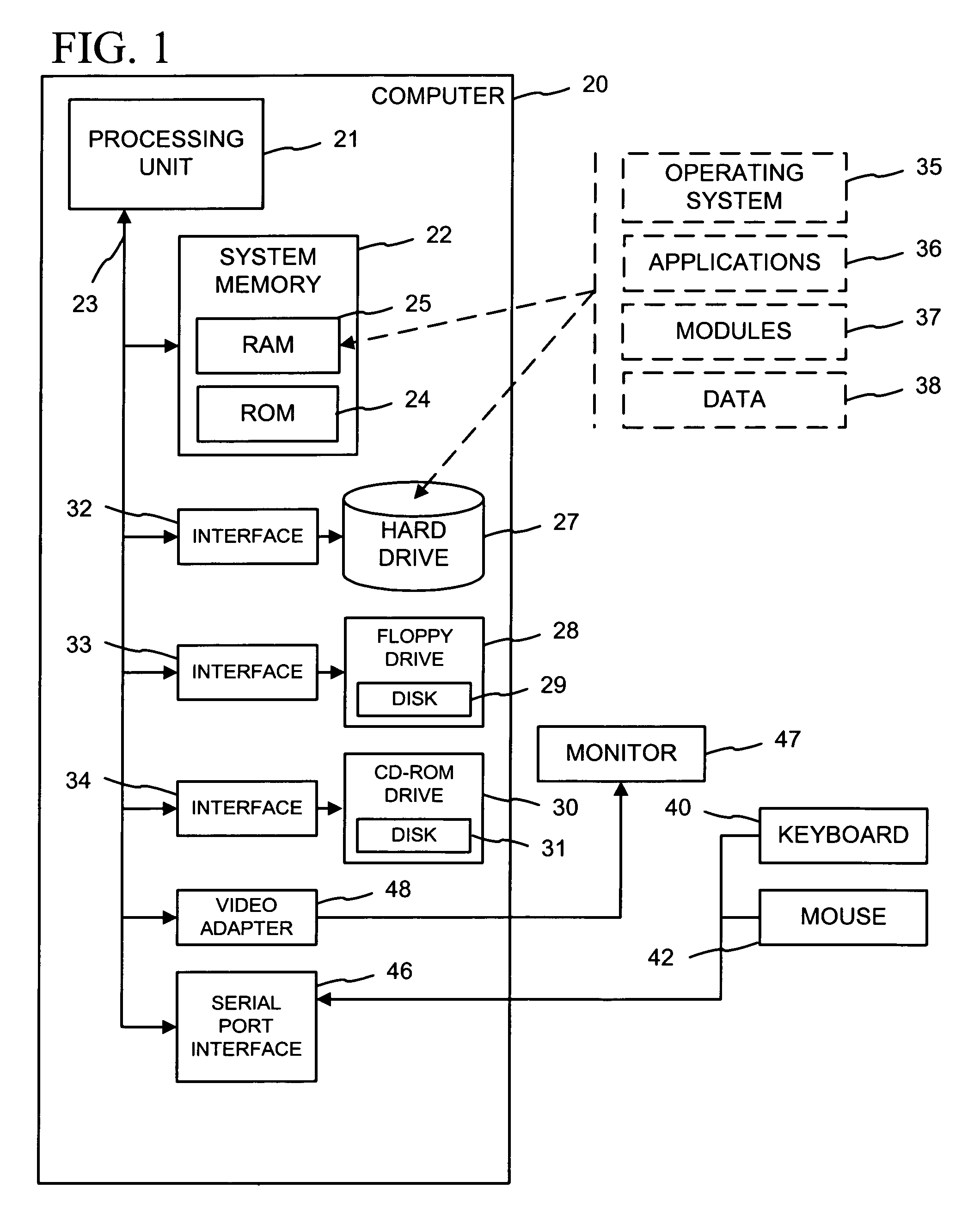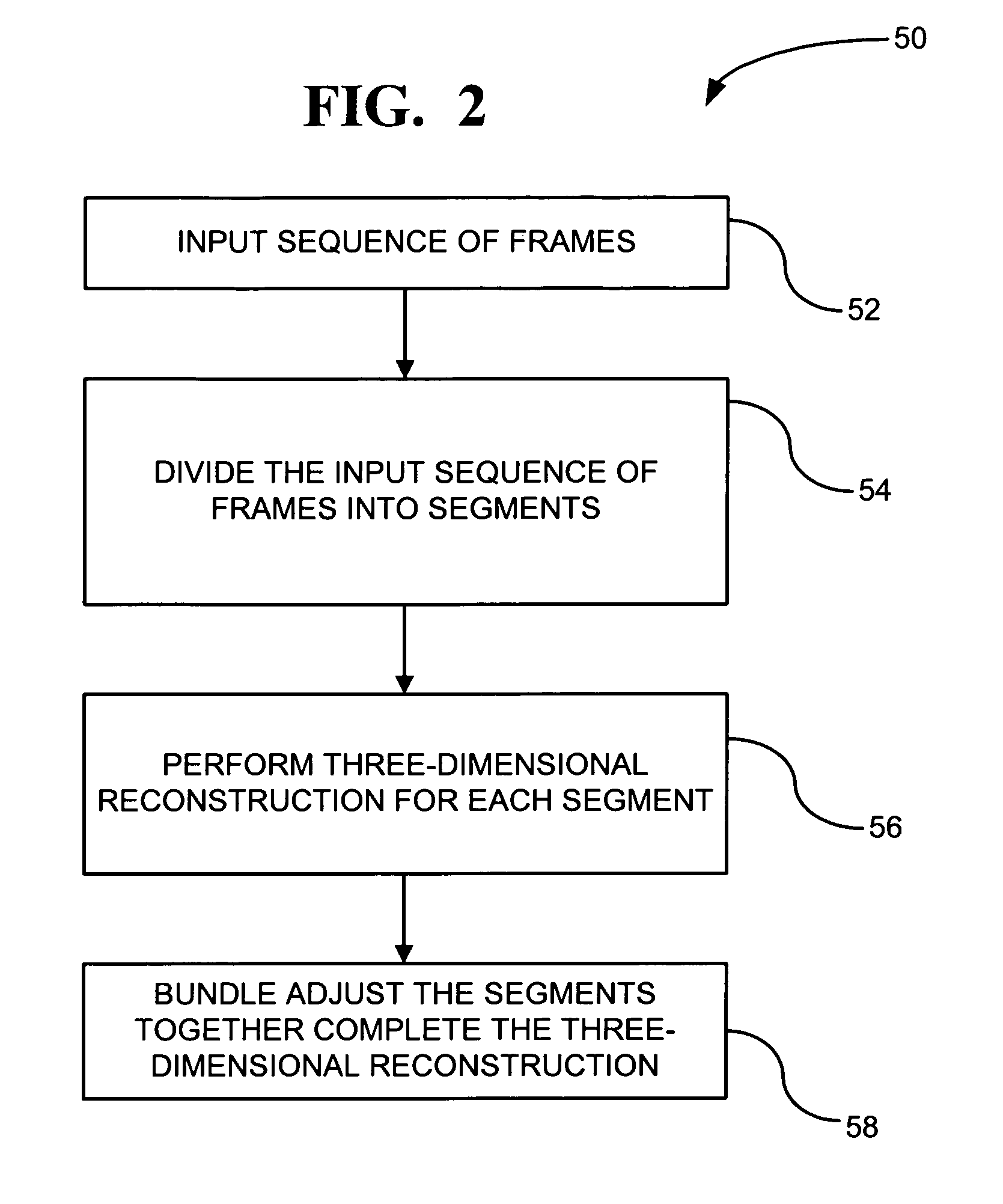Method and apparatus for recovering a three-dimensional scene from two-dimensional images
a two-dimensional image and scene technology, applied in the field of three-dimensional computer graphics, can solve the problems of time-consuming bundle adjustment, computationally expensive bundle adjustment, and difficulty in resolving the sequence of two-dimensional images, and achieve efficient segmentation of the sequence of frames, reduce the number of frames per segment, and improve the effect of image quality
- Summary
- Abstract
- Description
- Claims
- Application Information
AI Technical Summary
Benefits of technology
Problems solved by technology
Method used
Image
Examples
Embodiment Construction
Exemplary Operating Environment
[0021]FIG. 1 illustrates an example of a computer system that can serve as an operating environment for the 3D reconstruction. With reference to FIG. 1, an exemplary computer system for implementing the invention includes a computer 20 (such as a personal computer, laptop, palmtop, set-top, server, mainframe, and other varieties of computer), including a processing unit 21, a system memory 22, and a system bus 23 that couples various system components including the system memory to the processing unit 21. The processing unit can be any of various commercially available processors, including Intel x86, Pentium and compatible microprocessors from Intel and others, including AMD; Alpha from Compaq; MIPS from MIPS Technology, NEC, IDT, Siemens, and others; and the PowerPC from IBM and Motorola. Dual microprocessors and other multi-processor architectures also can be used as the processing unit 21.
[0022]The system bus can be any of several types of bus stru...
PUM
 Login to View More
Login to View More Abstract
Description
Claims
Application Information
 Login to View More
Login to View More - R&D
- Intellectual Property
- Life Sciences
- Materials
- Tech Scout
- Unparalleled Data Quality
- Higher Quality Content
- 60% Fewer Hallucinations
Browse by: Latest US Patents, China's latest patents, Technical Efficacy Thesaurus, Application Domain, Technology Topic, Popular Technical Reports.
© 2025 PatSnap. All rights reserved.Legal|Privacy policy|Modern Slavery Act Transparency Statement|Sitemap|About US| Contact US: help@patsnap.com



